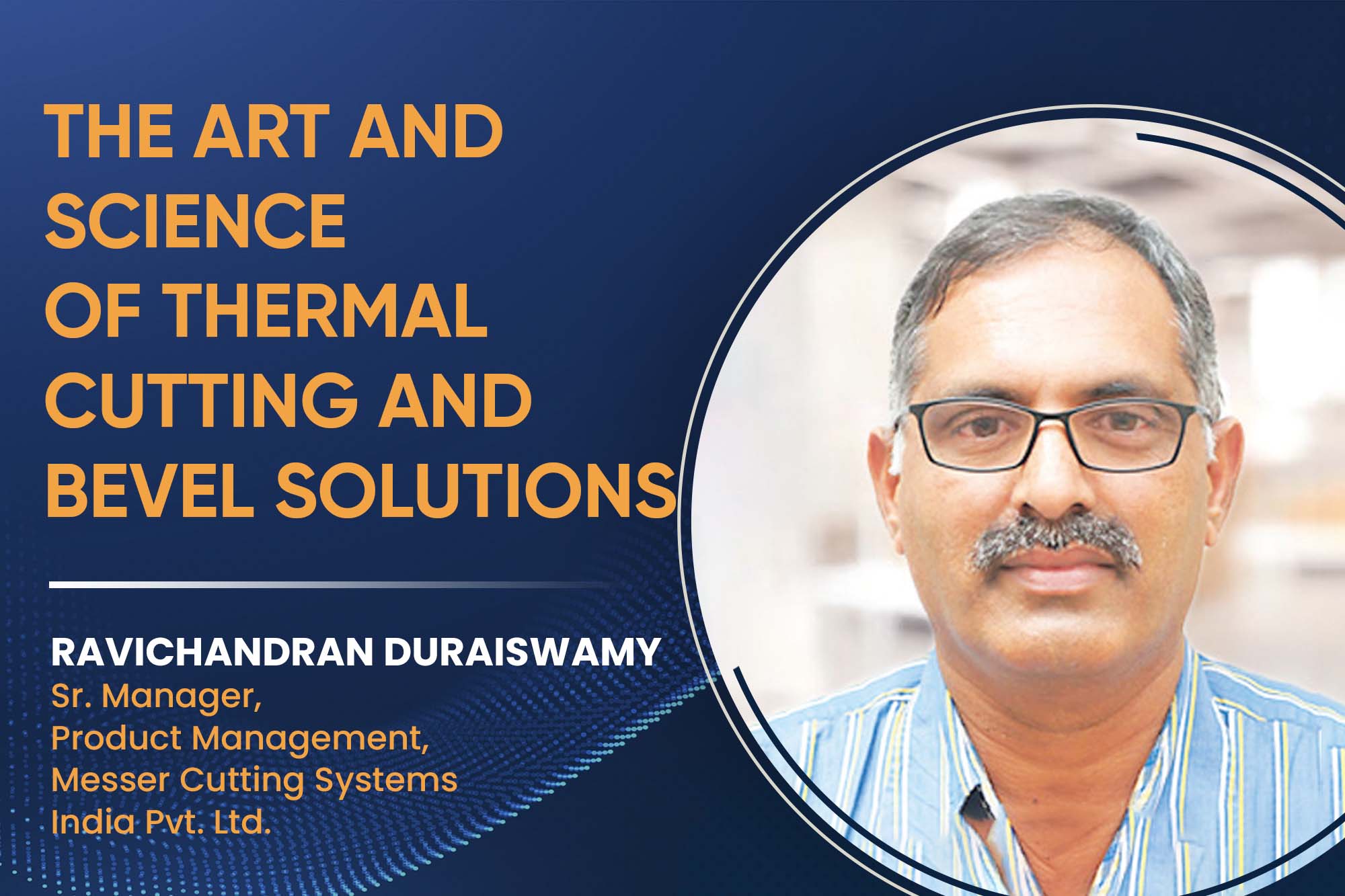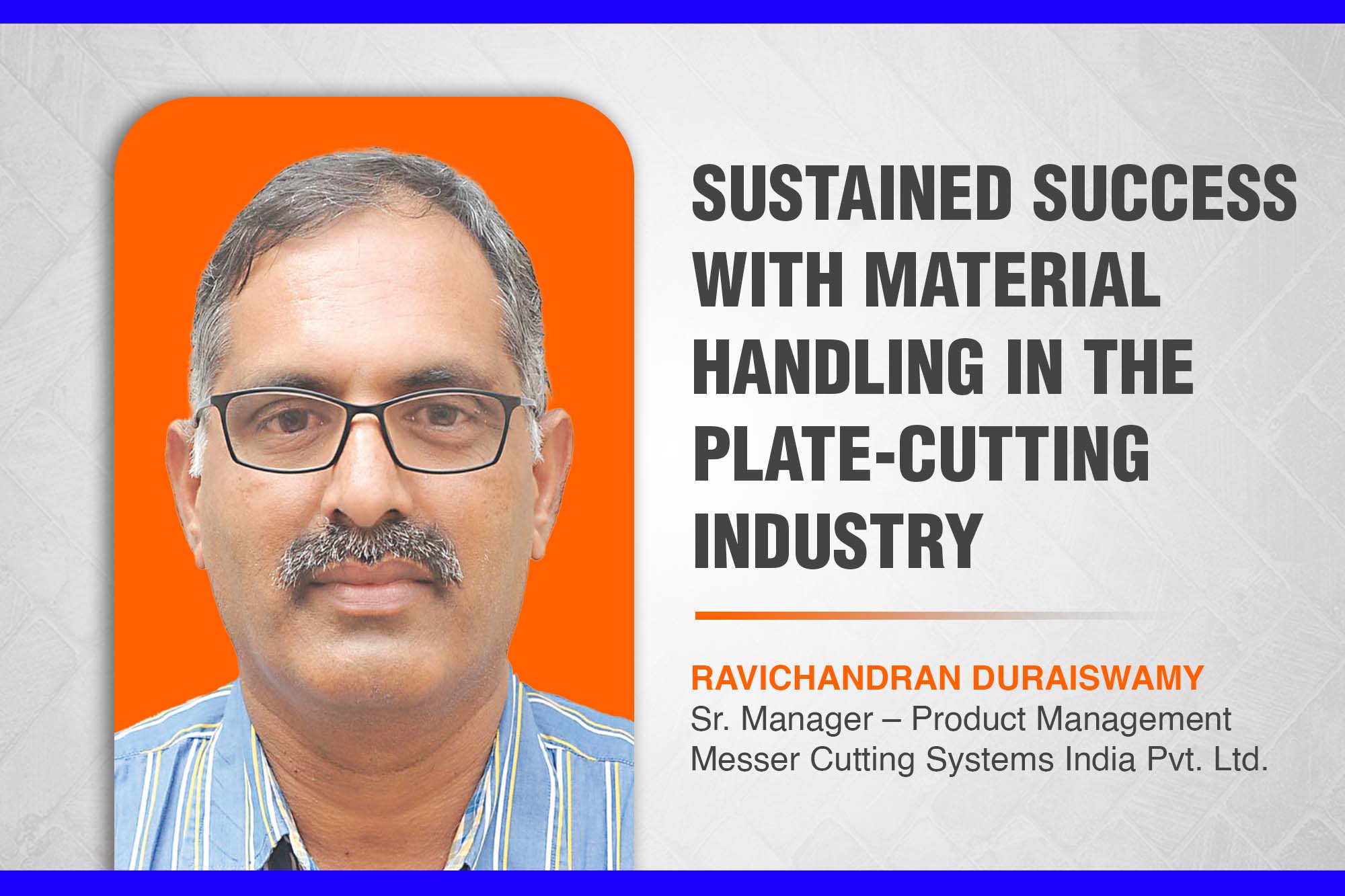The art and science of thermal cutting and bevel solutions
By OEM Update Editorial May 9, 2024 7:15 pm IST
Thermal cutting is one of the most critical production processes in the metal production and metalworking sectors. It covers structural engineering, machine fabrication, energy equipment manufacturing, shipbuilding, and plant manufacturing.
Thermal cutting renders energy in diverse forms to sculpt a wide array of shapes from both ferrous and nonferrous materials. It can be sheets or hefty slabs. These materials are commonly termed “flats” in the metal processing sector. They encompass various grades. Conversely, other metal types like angles, channels, beams, pipes, and rods are collectively referred to as “longs.”
Thermal cutting process
Selecting the appropriate thermal cutting process is crucial for cutting metal. This decision hinges primarily on two key factors: the material type and its thickness. Whether the material is ferrous or nonferrous determines the suitable cutting method. Similarly, precision is paramount in thermal-cutting processes to maintain the tolerance for desired quality, dimensional accuracy, and essential process foundations. Distinct cutting techniques establish quality features, including roughness depth, angularity tolerances, and perpendicularity.
Understanding the physics behind the cutting process is essential. It includes two categories based on their underlying physics, such as burning via oxidation, melting, and vaporisation (sublimation). The choice of process significantly influences material type, tolerances, and post-cutting chemical and physical responses.
Then comes the production, which ranges from manual tools to fully automated systems across different industries. The scale of production and its location play a significant role in selecting the appropriate procedure, whether it is carried out on-site, in enclosed spaces, or in conventional factory settings.
During the post-cutting, the parts cut thermally often undergo additional operations such as fitting, welding, grinding, bending, or heat treatment.
Further, the metal is removed using energy that carriers’ hot gases, electric gas discharge, or laser beams. These carriers are gas, plasma, and laser. They directly impact the cut parts’ physical and mechanical qualities. Factors such as mechanical stress, chemical reactions, and fatigue determine the appropriate thermal cutting process.
Plates are cut through three primary processes: oxyfuel, plasma, and laser. In all three technologies, plates can be cut either straight or at a bevel.
Bevel Cutting
Proper edge preparation for welding assists in achieving high-quality results, maintaining productivity, and minimising costs associated with rework and downtime.
Metal is normally prepared for welding by cutting and beveling the base material. The care and preparation put into the first cut can significantly lessen the need for intensive post-processing later on. Simultaneously, Torches, plasma cutters, and shears are all valuable instruments for edge preparation. Manual equipment such as cutting wheels and mechanical bevel cutters may also be employed. However, each method of edge preparation has its advantages and downsides.
Proper metal preparation for welding is essential for continuously providing high-quality outcomes, preserving productivity, and lowering costs. For example, cutting using a right-angle grinder is cheaper, more portable, and requires less setup and maintenance than other methods. On the other hand, making clean, straight cuts using this method requires a great amount of experience and ability. A neat and even space between the two parts that need to be welded produces a stronger, more uniform weld requiring less filler metal. This lowers expenses while also speeding up the welding process.
Application of bevel-cuttingIndustrial bevel cutting is an essential technology in many industries because accurate and angled cuts are required for welding or connecting metal components. Bevel cutting is essential for preparing structural steel components like beams, columns, and plates for welding in building projects. Similarly, shipbuilding necessitates precision bevel cutting of metal plates and sections to allow appropriate fitting and welding of hulls, decks, and other structural components.
Bevel cutting is used in automotive manufacturing to fabricate frames, chassis, and body panels, which ensures proper vehicle assembly and welding. Aerospace applications necessitate precise bevel cutting for fabricating aircraft components such as fuselages, wings, and engine parts to meet demanding performance and safety requirements.
In the oil and gas industry, bevel cutting is critical for preparing components for pipelines, refineries, and processing plants, assuring optimal fit and operation in harsh conditions. Bevel cutting helps manufacture heavy equipment for constructing strong components, including frames, booms, and brackets, ensuring perfect assembly and structural integrity.
Power generation facilities use bevel cutting to fabricate essential components for power plants, ensuring efficient operation and reliability. These components comprise turbine blades, boiler components, and heat exchangers. Furthermore, metalworking and fabrication businesses use bevel cutting for various applications, including custom projects, repairs, and prototype development. It provides versatility and precision in metal-cutting applications.
Role of Messer in Plate Cutting
Messer offers comprehensive plate-cutting solutions. These solutions are tailored to meet the diverse needs of industries ranging from automotive and aerospace to construction and energy. Their cutting-edge technologies and equipment are for precision, efficiency, and cost-effectiveness in plate-cutting processes. Messer’s oxyfuel cutting systems provide robust and reliable cutting solutions for thick carbon steel plates. Oxyfuel cutting achieves high-quality cuts with minimal dross and excellent edge squareness. It utilises a combination of oxygen and a fuel gas, such as acetylene or propane.
Plasma cutting systems use modern plasma technology to cut various materials, such as carbon steel, stainless steel, aluminium, and nonferrous metals. Plasma cutting solutions are ideal for multiple applications, from thin gauge to thick plate cutting, as they have high cutting speeds, precision, and versatility.
Messer fibre laser cutting systems deliver exceptional speed, accuracy, and flexibility for cutting a variety of materials with unmatched precision. With fibre laser technology, the cutting solutions offer superior edge quality, minimal heat-affected zones, and reduced operating costs compared to traditional cutting methods.
They offer hybrid cutting solutions that combine oxyfuel, plasma, and fibre laser technologies to elevate cutting efficiency and versatility. These integrated systems allow users to exercise cutting processes for different material types, thicknesses, and applications. It achieves optimal results with minimal setup time and material waste.
Plate-cutting solutions are designed for seamless integration into automated production environments. They enable increased productivity, reduce labour costs, and improve workflow efficiency. From robotic cutting systems to advanced software solutions, Messer offers a range of automation options to streamline plate-cutting operations and maximise throughput.
They have various bevel tools, from manually positioned tools for simple beveling to automated ones in oxyfuel, plasma, and laser processes that help with complicated contour beveling and produce all preparatory work in less time.
Cookie Consent
We use cookies to personalize your experience. By continuing to visit this website you agree to our Terms & Conditions, Privacy Policy and Cookie Policy.






